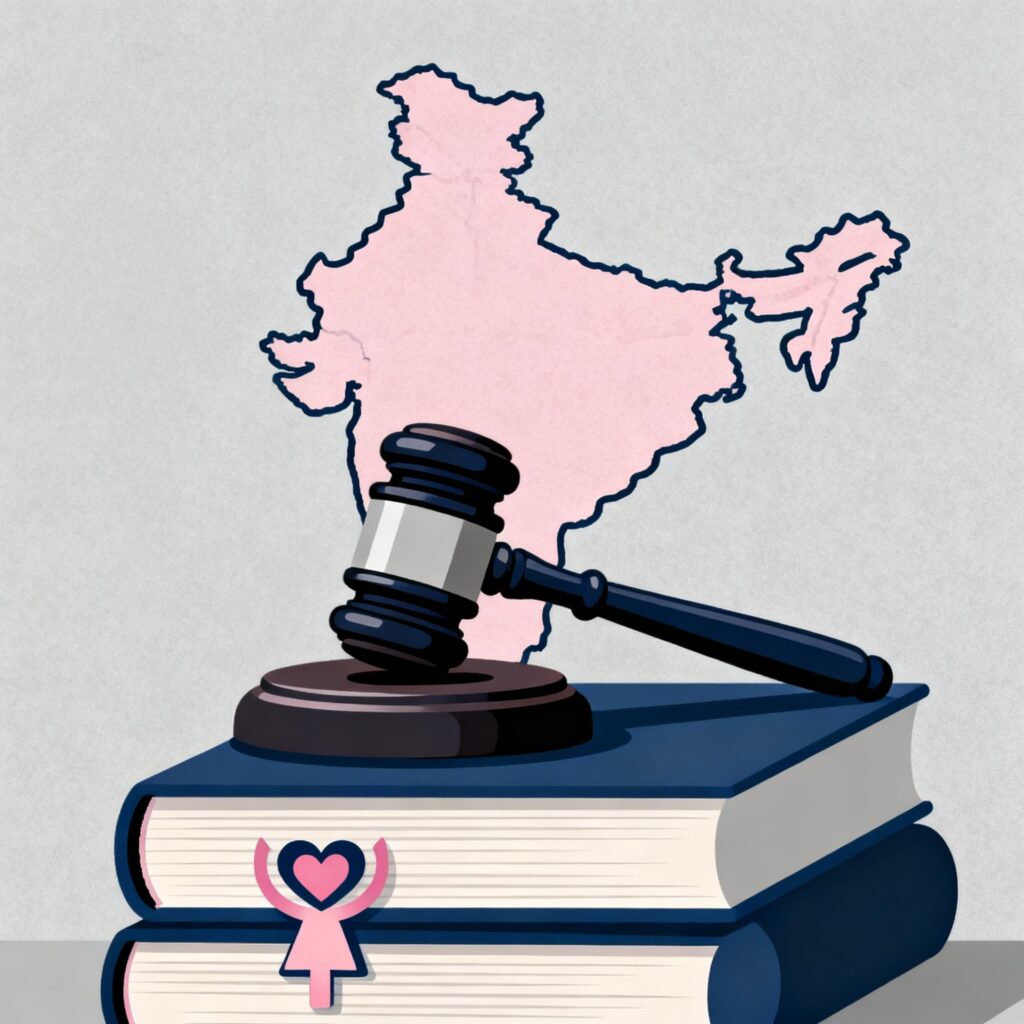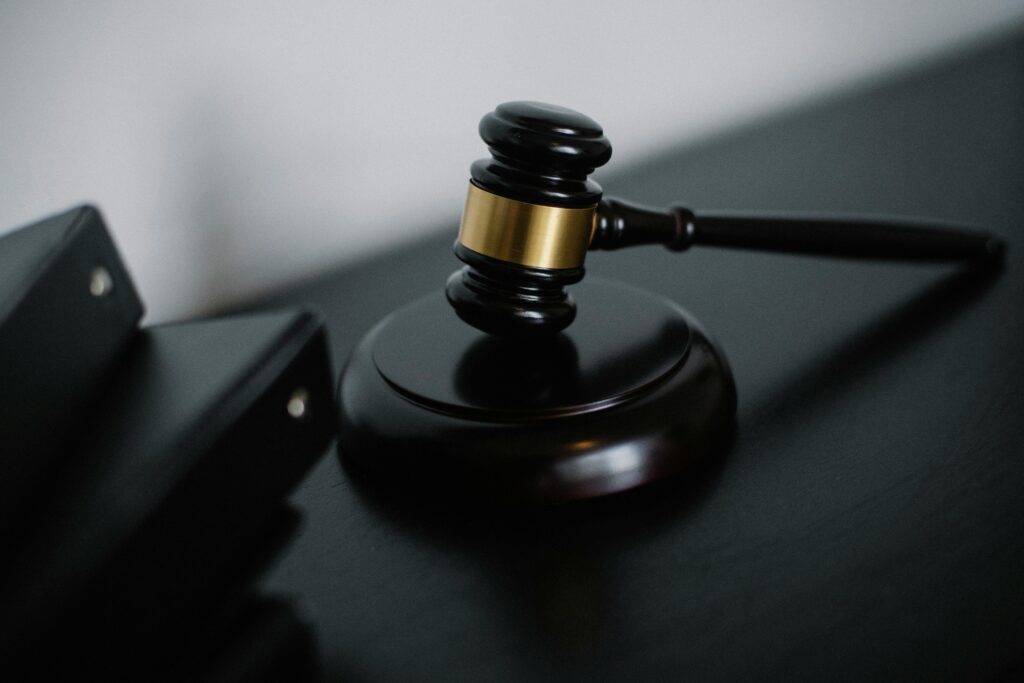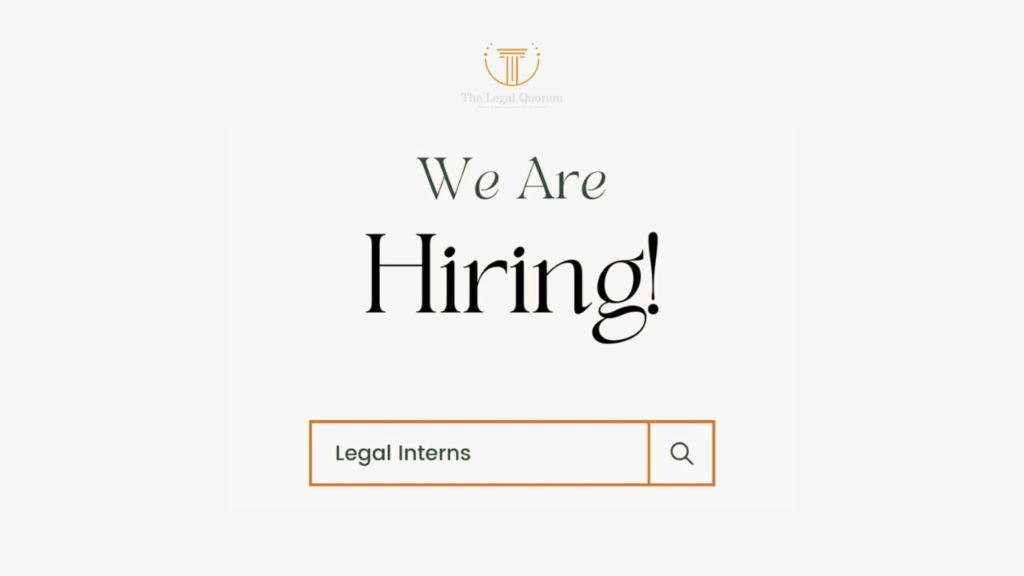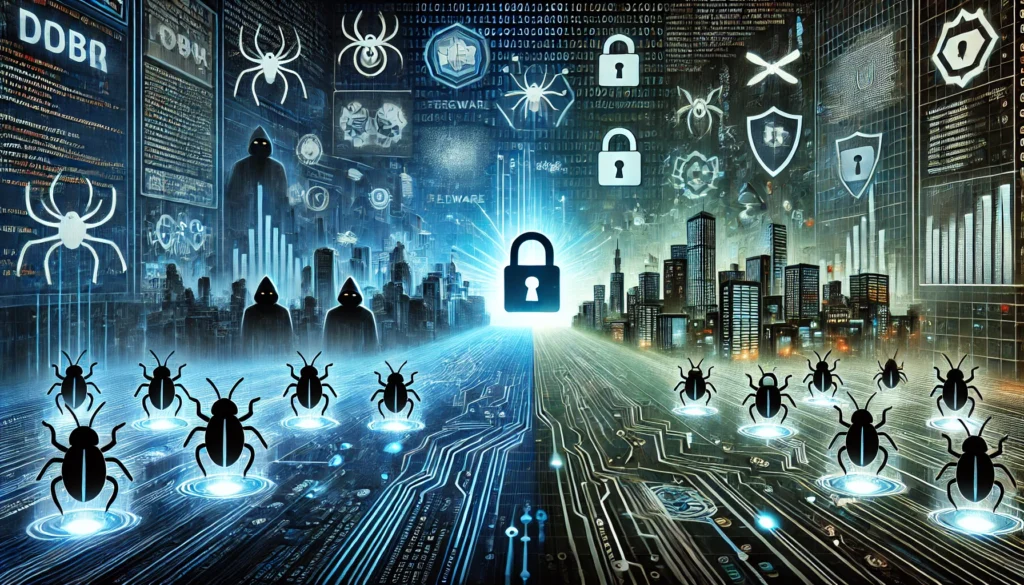Published On: September 19th 2025
Authored By: Pushpa
Bharat College Of Law
“There is no absolute right to abuse others in the garb of free speech” – Supreme Court of India
Abstract
In a democracy, freedom of speech and expression is one of the most essential rights. It helps people take part in public life, hold leaders accountable, and shape the society they live in . This right forms the base for all other freedoms – it gives them meaning and make them possible. That’s why people often say, “ freedom of speech is the mother of all other freedoms “. It allows people to express their thoughts and opinion freely. But sometimes, this freedom is misused to spread hate speech – words that can hurt or target certain individuals or communication. So, There needs to be a careful balance between letting people speak freely and stopping speech that spreads hate or violence. The SC has also ruled that freedom of speech is an inalienable right adjunct to the right to life (Article 21). These two rights are not separate but related.
This article looks at how the laws in India deals with the issue . It explains what freedom of speech and hate speech mean, what the Indian constitution and laws say about them, how courts have handled such cases, and the ongoing discussion about how to maintain the balance fairly.
Introduction
In India, the Constitution gives every citizen the right to free speech under Article – 19 (1)(a) but this right isn’t unlimited. Article – 19(2) allows the government to place reasonable limits on speech to protect public order, morality, decency, national security, and other important concern like preventing defamation or inciting violence. This freedom isn’t just a part of India’s Constitution—it’s also protected by global agreements like the Universal Declaration of Human Rights (1948), the International Covenant on Civil and Political Rights, and the European Convention on Human Rights. These all recognize that people must be free to speak their minds for any democracy to truly function.
This become especially important when dealing with hate speech – speech that attacks people based on their religion, caste, gender, race and sexual orientation. While we must protect the right to share opinions and encourage healthy debate, we also need to make sure that speech doesn’t lead to violence or social invest. Finding this balance between free speech and public Safety is a major challenge.
India deals with the hate speech using laws like Bharatiya Nyaya Sanhita (BNS) and IT Act. Over the years, Indian courts have helped shaped the rules by deciding how these laws should be applied.
Definition
Article 19 of the Universal Declaration of Human Rights (UDHR) says that everyone has the right to have their own opinions and express them freely—whether by speaking, writing, creating art, or using any other form of communication, across any borders.
Later, Article 19 of the International Covenant on Civil and Political Rights (ICCPR) added that while we have these rights, they also come with responsibilities. So, there can be some limits on free speech—especially when it’s necessary to protect things like someone else’s rights or reputation, national security, public order, health, or morals.
Understanding the Essence of Free Speech in a Democracy
Free speech is the lifeline of a democratic society. It allows individuals to express their thoughts, share opinions, and question those in power without fear. In a democracy, where governance is based on public participation and accountability, freedom of speech enables citizens to make informed decisions, engage in public debates, and hold authorities responsible. Without free speech, democracy loses its spirit. It helps build an informed electorate, ensures transparency, and strengthens the institutions of democracy. It protects dissent, fosters creativity, and allows for the peaceful resolution of conflicts through dialogue rather than violence. In the Indian context, the Constitution guarantees this right under Article 19(1)(a), affirming that the voice of the people cannot be suppressed. However, this freedom must be used responsibly, as it is subject to reasonable restrictions under Article 19(2) to prevent misuse that can harm the public interest or incite hatred.
The Supreme Court of India has time and again reiterated the importance of this right, calling it the foundation of all other rights. In S. Rangarajan v. P. Jagjivan Ram (1989), the Court observed
that freedom of expression cannot be suppressed unless it poses a clear and present danger to public order.
Therefore, understanding and upholding the essence of free speech is essential not just for legal compliance but for the health and vibrancy of democracy itself.
Freedom of Expression: A Pillar of Indian Constitutional Framework
Freedom of expression is one of the most cherished and fundamental rights guaranteed by the Constitution of India. Enshrined in Article 19(1)(a), this right empowers every citizen to express their thoughts, opinions, beliefs, and ideas freely. It is considered the cornerstone of a vibrant and functioning democracy, enabling open discussion, criticism of the government, and the flow of information in society. The framers of the Constitution understood that for democracy to thrive, the people must be free to speak without fear. As Justice Patanjali Sastri famously remarked in Romesh Thappar v. State of Madras (1950), “Freedom of speech and of the press lay at the foundation of all democratic organizations.”
However, this freedom is not absolute. The State may impose reasonable restrictions under Article 19(2) in the interests of sovereignty and integrity of India, security of the state, public order, decency or morality, contempt of court, defamation, or incitement to an offense. Over the decades, the Indian judiciary has played a crucial role in interpreting and expanding the scope of this right, ensuring that it is protected while maintaining societal harmony. The courts have balanced this right with other competing interests, especially in cases involving hate speech, sedition, or public disorder.
Thus, freedom of expression in India is not merely a constitutional provision—it is the lifeblood of a democratic society, ensuring accountability, participation, and plurality of voice.
Constitutional and Legal Framework
Article 19(1)(a) of the Indian Constitution guarantees to all citizens the right to freedom of speech and expression. This includes the right to express opinions, communicate ideas, disseminate information, and access information through any medium—be it spoken words, writing, print, digital platforms, art, or symbolic expressions.
Scope of Article 19(1)(a):
- Freedom of Press: Though not separately mentioned, it is included under Article 19(1)(a). The press acts as a watchdog in a democracy.
- Right to Criticize the Government: Citizens can question policies and actions of the state.
- Artistic and Cultural Expression: Music, paintings, films, and literature fall under this protection.
- Commercial Speech: Advertising and business communication, though regulated, are part of free speech.
- Right to Silence: Recognized in Bijoe Emmanuel v. State of Kerala (1986), even the right to remain silent is part of this freedom.
Reasonable Restrictions under Article 19(2)
The right to freedom of speech and expression is given under Article 19(1)(a) of the Indian Constitution. But this right is not unlimited. To maintain peace, safety, and public interest, the government can put some reasonable restrictions under Article 19(2).
Here are the 8 grounds on which your freedom of speech can be restricted:
- Sovereignty and Integrity of India:-You cannot say or do anything that threatens the unity or safety of the country.
- Security of the State:- No one is allowed to promote violence or rebellion against the government. For example, promoting terrorism or war.
- Friendly Relations with Foreign States:- Speech that harms India’s relationship with other countries can be restricted.
- Public Order:- You can’t say or spread anything that may cause riots, fights, or disturb peace in society.
- Decency or Morality:- Obscene content (like vulgar movies or writing) can be banned to protect public decency.
- Contempt of Court:- You can’t say things that insult judges or courts, or hurt the dignity of justice.
- Defamation:- You cannot harm someone’s reputation by spreading lies or false facts about them.
- Incitement to an Offence:- Speech that provokes people to commit crimes (like hate speech or encouraging violence) can be restricted.
Judicial Interpretation of Free Speech
Judicial interpretation of free speech in India has evolved from a narrow literal view to a liberal democratic understanding, protecting not just political expression but also press freedom, artistic expression, and digital rights. However, courts have also upheld the State’s power to impose reasonable restrictions, ensuring that free speech does not incite violence, hatred, or disrupt public order.
Freedom of Speech on Social Media
The High Court of Tripura has held that posting on social media was virtually the same as a fundamental right applicable to all citizens, including government employees. It also asserted that government servants are entitled to hold and express their political beliefs, subject to the restrictions laid under the Tripura Civil Services (Conduct) Rules, 1988.
Hate speech : concept and challenges
There is no universally accepted definition of hate speech under Indian law. However, the law commission, in it’s 267th report, defined hate speech as language that spreads hatred on identity market such as religion, caste, or gender.
Distinguishing Between Free Speech and Hate Speech
The key distinction lies in the intent and effect. While free speech seeks dialogue or critique, hate speech seeks to degrade or instigate hostility. The Supreme Court, in Pravasi Bhalai Sangathan v Union of India, emphasized that speech crossing the boundary into hate cannot claim constitutional protection.
Types and Forms of Hate Speech
- Verbal slurs against communities.
- Written defamation in print or online media.
- Communal propaganda during political rallies.
- Social media trolling, memes, and fake news targeting groups.
- Deepfake videos meant to misrepresent or provoke hatred.
Statutory provisions governing hate speech
Bharatiya Nyaya Sanhita (BNS)
- Section 152: Acts It criminalizes any act (including speech) that endangers the sovereignty, unity, or integrity of India.
- Section 196 of the BNS aims to protect India’s social fabric by penalizing those who promote enmity between different groups on the basis of religion, caste, race, language, or region. It includes acts through speech, writing, signs, or electronic forms such as social media, and also targets actions that disturb public peace, especially in religious places.
- Section 299 This section deals with deliberate and malicious acts intended to outrage the religious feelings of any class by insulting its religion or religious beliefs. • Section 353 which deals with statement conducing to public mischief.
Representation of the People Act, 1951
Section 123(3) and 125 prohibit hate speech in electoral campaigns. Appeals to caste or religion for votes are considered corrupt practices.
SC/ST (Prevention of Atrocities) Act, 1989
Speech intended to humiliate or threaten members of Scheduled Castes or Tribes in public is punishable under this law.
Protection of Civil Rights Act, 1955
This Act targets caste-based discrimination and prohibits hateful expressions promoting untouchability.
Information Technology Act, 2000
- Section 69A: Allows blocking of content in the interest of national security, public order, or preventing incitement to offences.
- Section 66A: (Struck down) Criminalized offensive messages sent through communication services.
Judicial pronouncement and case studies
Shreya Singhal v Union of India (2015)
The Supreme Court invalidated Section 66A of the IT Act, stating that it was vague and infringed Article 19(1)(a). The Court distinguished between discussion, advocacy, and incitement—only the latter could be restricted.
Pravasi Bhalai Sangathan v Union of India (2014)
The Court emphasized that existing provisions in the IPC were sufficient to deal with hate speech and called for better enforcement rather than new laws.
Amish Devgan v Union of India (2020)
The Court ruled that the context, content, and intent of speech must be examined to determine whether it constitutes hate speech.
In October 2022, a court in Uttar Pradesh (UP) found Samajwadi Party leader Azam Khan guilty of hate speech for his comments against UP Chief Minister Yogi Adityanath in 2019. Khan was charged for a provocative speech against Adityanath and IAS officer Aunjaneya Kumar Singh, then District magistrate.
Supreme Court’s Evolving Jurisprudence
Indian jurisprudence increasingly recognises the “proportionality” test: whether a restriction on speech is the least intrusive means to achieve the State’s goal.
Recent Cases and Controversies
Recent hate speeches by political leaders, communal riots linked to provocative social media content, and mob lynching’s spurred by fake news reflect the pressing need to regulate hate speech more effectively.
The Role of Media and Social Platforms
Freedom of Press vs. Responsibility :- Media, though protected under Article 19(1)(a), must uphold ethical journalism. Misreporting or sensationalism can provoke communal tensions and escalate hate narratives.
- Regulating Hate Speech on Social Media:- Platforms like Twitter, Facebook, and YouTube have content moderation policies but enforcement is inconsistent. Their algorithms often amplify inflammatory content, making regulation a complex issue.
- Impact of Fake News and Deepfakes:- Deepfakes and fake news challenge traditional forms of legal regulation. They can distort reality, manipulate elections, or incite violence—all while maintaining a veneer of legitimacy.
Digital Age and the Spread of Hate
The internet has amplified the impact of hate speech, especially on social media platforms. Though platforms have internal moderation policies, enforcement is inconsistent. India’s Information Technology (Intermediary Guidelines and Digital Media Ethics Code) Rules, 2021 mandates prompt removal of unlawful content.
Law Commission Recommendations
The Law Commission, in its 267th Report, proposed inserting:
- Section 153C: Criminalizing speech that incites fear, alarm, or violence. • Section 505A: Punishing speech that causes humiliation or discrimination.
These proposals aim to bridge the current legal gaps in handling hate speech effectively. Challenges in Regulation
- Ambiguity: Absence of a clear definition leads to arbitrary enforcement. • Selective Application: Political bias often determines which cases are prosecuted. • Judicial Delays: Hate speech cases are slow-moving, weakening deterrence. • Conflict of Rights: Striking a balance between speech and dignity is constitutionally complex.
Conclusion
Ensuring Free Speech Without Fueling Division-Free speech, while essential, must not be weaponized to spread hatred. A democracy thrives when its citizens can speak freely without fear—and when that freedom does not lead to the marginalisation of others.
The Way Forward for Democratic Resilience- India must adopt a clear, constitutional, and human rights-based definition of hate speech. Stronger legal safeguards, judicial oversight, and public awareness are needed to ensure that the right to free speech protects democratic values without becoming a tool of division.
Reference
- Constitution of India, Art 19(1)(a)
- S. Rangarajan Etc. vs P. Jagjivan Ram, 1989 SCC 574
- Romesh Thappar v State of Madras AIR 1950 SC 124.
- Law Commission of India, 267th Report on Hate Speech, March 2017. 5. International Covenant on Civil and Political Rights (ICCPR), Arts 19–20. 6. Shreya Singhal v Union of India (2015) 5 SCC 1.
- Information Technology Act 2000, ss 66A (struck down), 69A.
- Information Technology (Intermediary Guidelines and Digital Media Ethics Code) Rules, 2021.
- Bharatiya Nyaya Sanhita, 2023
- Universal Declaration of Human Rights Act, Art 19
- Representation of the People Act,1951
- SC/ST ( Prevention of Atrocities) Act, 1989
- Protection of civil rights Act, 1955
- Amisha Devgan vs union of India (2020)
- www.wikipedia.org
- https://www.legalserviceindia.com/Legal-Articles/hate-speech-versus-freedom-of speech-analysis-in-india/




